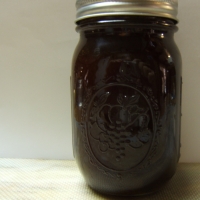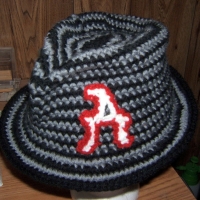Spiced Watermelon Honey
From pointsevenout 14 years agoIngredients
- 12 cups watermelon juice shopping list
- 2 cups water shopping list
- 3 ounces preserved ginger shopping list
- ¾ cup lemon juice shopping list
- ½ t salt shopping list
- 12 cups granulated sugar shopping list
- 4 cinnamon sticks shopping list
- 2 teaspoons whole cloves shopping list
How to make it
- Make your own preserved ginger to save money, or not. Preserved Ginger
- Cut melon into eight crescents for ease of handling.
- Seed and cut sweet meat out of the rind and juice. Pare and discard the skin. Juice the rind.
- A food mill will work if you don't have a juicer. A food processor or blender will work too but will have to be strained through some cheesecloth.
- There are recipes out there that say to use only the skinned rind without any red meat. DON'T DO IT. It will taste like boiled down squash or cucumber. You need the seedless red meat for color and flavor. It imparts a wonderful garnet to burgundy color on the finished product.
- A scant 4 cups watermelon juice weighs 2 pounds, FYI.
- Blend ginger and a little of the water in a food processor to puree. Add to a stock pot along with the rest of the water and watermelon juice.
- The juice, after everything is added, should come up to about half way in the stock pot.
- Dissolve the salt into the lemon juice.
- Bring the stock pot to a boil then reduce to a medium low setting to cook slowly for 30 minutes.
- While the stock pot is coming to a boil, make a spice bag from cheesecloth, tying up the cinnamon and cloves.
- Add sugar and lemon juice to the stock pot. Bring it back to a boil then to a medium low setting to cook slowly for about 3 hours to a target temperature of 235°F. Stir frequently. The stock pot should be half full at this time.
- Slow cooking and a half full pot is the way to go. A higher boil temperature could boil over in an inattentive moment and especially if the pot is not large enough. Not a pretty sight on your stovetop. LESSON LEARNED the hard way.
- Add the spice bag after sugar is added to the pot.
- Using a candy thermometer, monitor the temperature, and remove from heat once the temperature reaches 235°F. This is the high end of the thread stage and low end of the soft ball stage on your thermometer. It yields a nice honey texture. Any higher temperature and it will start being jelly. Please check the calibration of your thermometer before using by taking a reading of boiling water. At sea level water boils at 212°F. Adjust your reading accordingly.
- Let the liquid cool to room temperature to check viscosity which should be to that of honey. If too thin, reheat and cook to a little higher temp. If too thick, add a little water, stir it in, reheat and cook to a little lower temp. If you do have to reheat the honey, do it on no more than a medium high heat WHILE STIRRING CONSTANTLY then reduce it to a medium low when it reaches simmering temperature. You do not want to scorch the thickened liquid by letting it set on the bottom of the pan without any movement. LESSON LEARNED the hard way.
- Sterilize pint or half-pint canning jars. Drain and discard the spice bag. Fill jars with hot honey to within ¼ inch of the top of the jar. Clean any liquid from rim of jar. Assemble pre-warmed lids and rings on jars with a finger snug fit.
- Process jars in a water-bath for 10 minutes, or longer at altitudes higher than 1000ft.
- Let jars rest for 24 hours or overnight.
- This yields 5 pints if you've done it right, with a quarter cup left over for pancakes to test out your handiwork.
People Who Like This Dish 2
- mandymoore Wiggins, Ms
- ClarkGriswold Nowhere, Us
- Show up here?Review or Bookmark it! ✔
The Groups
- Not added to any groups yet!


Reviews & Comments 1
-
All Comments
-
Your Comments